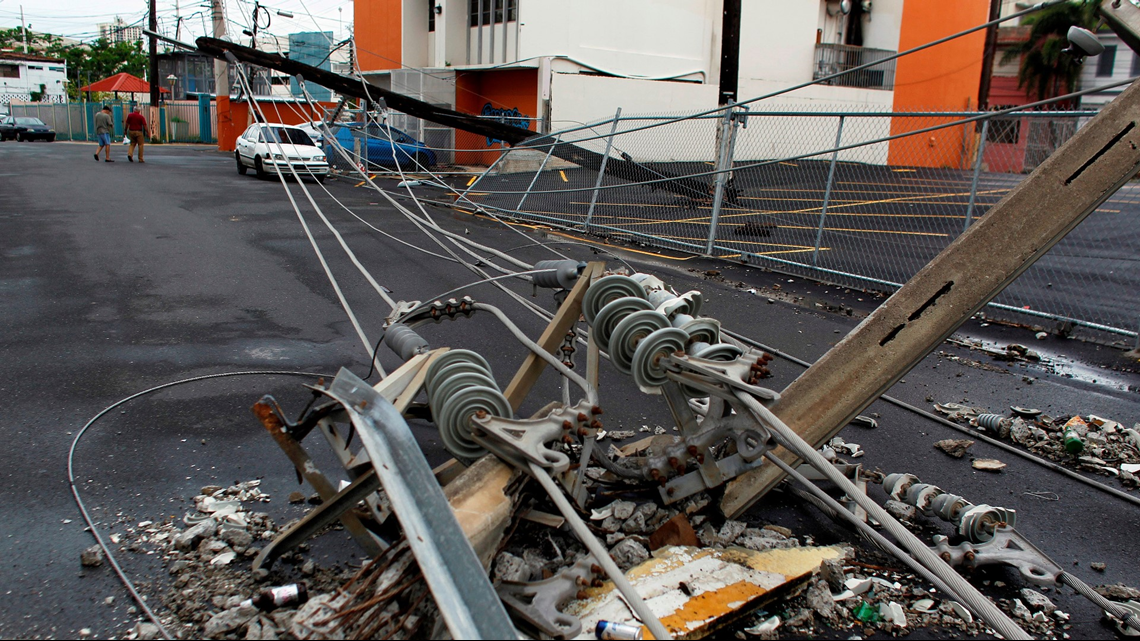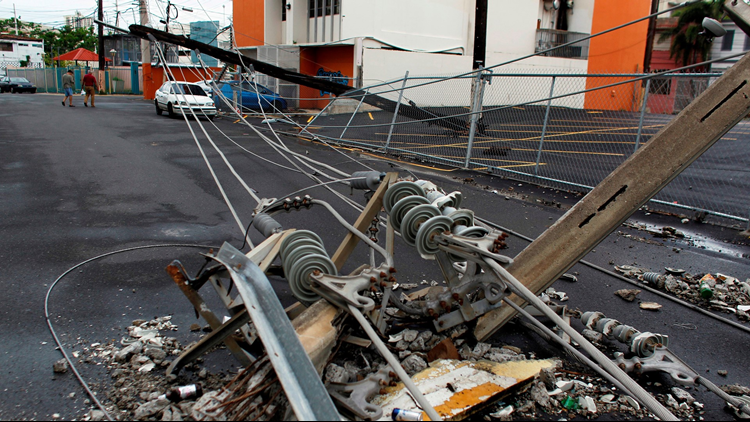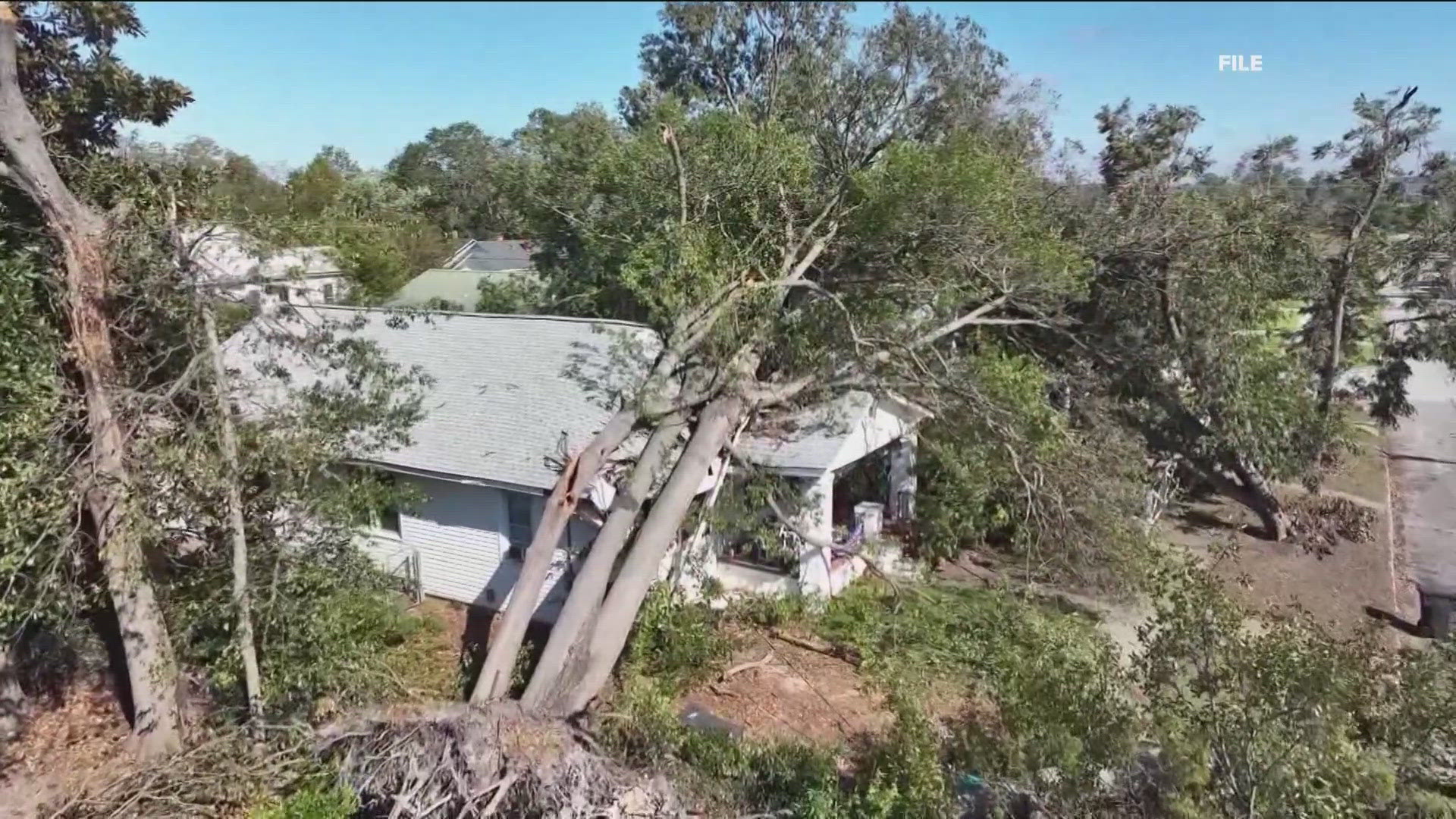When tropical weather systems become hurricanes, their strength is measured on a wind scale that classifies their intensity.
The classifications were developed in 1971 and introduced to the general public in 1973 by the National Hurricane Center. Mirroring the Richter magnitude scale developed to measure the intensity of earthquakes, the hurricane scale - officially called the Saffir-Simpson hurricane wind scale after the engineer and meteorologist who developed the scale.
Download the FREE 11Alive News app to receive breaking alerts and subscribe to our newsletter for email updates.
Tropical Depressions are classified as tropical disturbances with defined surface circulation and maximum sustained winds of under 34 mph. On satellite photos and radar, they tend to look like disorganized blobs, though meteorologists note that organization usually begins to occur at this stage.
Depressions become Tropical Storms when their maximum sustained winds reach 34 mph. At that point, the distinct cyclonic shape and signature may become more apparent on satellite photos and radar. Names are assigned to Tropical Storms in the North Atlantic Ocean and the Caribbean Basin by the National Hurricane Center in Miami. Other agencies bear responsibility for naming storms in other parts of the world.
When the maximum sustained winds of a tropical storm reach 74 mph, they officially become classified as a Hurricane. The classification scale takes over to describe their intensities.
The National Hurricane Center says that Hurricanes reaching Category 3 and higher are considered Major Hurricanes. due to their potential for significant damage to property and potential for significant injury or loss of life. However, Category 1 and 2 storms are not to be taken lightly and still may cause damage, injury or loss of life.


Category 1 hurricanes have maximum sustained winds of between 74 and 95 mph. Very dangerous winds from these storms will produce some damage. Storms of this type generally do not cause major structural damage to well-constructed permanent structures.
Some signs and shingles can blow off of buildings. Trees and power lines are toppled in many areas, resulting in potentially widespread power outages, which may last several days in some areas.
Category 2 hurricanes have maximum sustained winds of between 96 and 110 mph. Extremely dangerous winds will cause extensive damage. These storms often cause significant damage to roofing materials on structures and can create major damage to poorly constructed structures.
Mobile homes are usually damaged or destroyed by category 2 storms. Poorly constructed or anchored signs are generally damaged significantly if not completely destroyed. Boats in unprotected anchorages may break free of their moorings. Power outages in areas hit by these storms will last for several days to weeks afterward.
Hurricanes are classified as Category 3 storms with maximum sustained wind speeds of between 111 and 129 mph. Devastating damage will occur in these storms. Well-built frame homes may see major damage or the removal of roof decking.
Buildings without a solid foundation -- like mobile homes -- are usually destroyed. Manufactured homes usually suffer severe and irreparable damage. In coastal areas, flooding destroys smaller structures and larger structures sustain damage from floating debris. Many trees are uprooted or snapped, blocking most roads and streets. Near total to total power loss can be expected for up to several weeks, and local water supplies are likely compromised or contaminated.
Category 4 storms are classified as those with maximum sustained winds of between 130 and 156 mph. Catastrophic damage will occur with these storms. Complete destruction of smaller residences is possible. Heavy, irreparable damage to near complete destruction of gas station canopies and other overhanging type structures is common.
Mobile homes and manufactured homes are flattened. Many wood frame structures see significant, if not irreparable damage. Most trees, except for the most hearty, are snapped or downed, leaving many areas isolated. Total and long-lived power outages and water system failures are expected, lasting for many weeks.
Category 5 is the highest classification on the Saffir-Simpson hurricane wind scale. Category 5 hurricanes have sustained wind speeds of 157 mph and higher. Catastrophic damage will occur during storms of this type. Near total destruction of many residences and industrial businesses will be seen. The destruction of many buildings with wide-span roofs, especially those without interior supports, will occur.
Only a few structures will remain standing, including those with solid concrete or steel construction that are made of reinforced concrete, brick or steel and are located at least 3-to-5 miles inland. Virtually all trees are snapped or knocked down and some may be debarked, isolating most communities.
Massive evacuation may be required if hurricanes of this type affect populated areas. Total and extremely long-lived power outages and water losses are to be expected, possibly lasting up to several months.
Some critics of the scale insist that the current system does not take into account other factors like storm surge, rainfall amount or intensity, a potential for spinoff tornadoes or other factors, but proponents insist that the current classification system provides a straightforward, easy-to-understand means of defining the strength of hurricanes.


